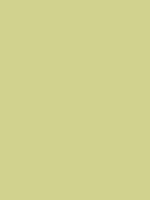#d1d28e Color Information
In a RGB color space, hex #d1d28e is composed of 82% red, 82.4% green and 55.7% blue. Whereas in a CMYK color space, it is composed of 0.5% cyan, 0% magenta, 32.4% yellow and 17.6% black. It has a hue angle of 60.9 degrees, a saturation of 43% and a lightness of 69%. #d1d28e color hex could be obtained by blending #ffffff with #a3a51d. Closest websafe color is: #cccc99.
-
- R 82
- G 82
- B 56
-
- C 0
- M 0
- Y 32
- K 18
● #d1d28e color description : Slightly desaturated yellow.
#d1d28e Color Conversion
The hexadecimal color #d1d28e has RGB values of R:209, G:210, B:142 and CMYK values of C:0, M:0, Y:0.32, K:0.18. Its decimal value is 13750926.
| Hex triplet | d1d28e | #d1d28e |
|---|---|---|
| RGB Decimal | 209, 210, 142 | rgb(209,210,142) |
| RGB Percent | 82, 82.4, 55.7 | rgb(82%,82.4%,55.7%) |
| CMYK | 0, 0, 32, 18 | |
| HSL | 60.9°, 43, 69 | hsl(60.9,43%,69%) |
| HSV (or HSB) | 60.9°, 32.4, 82.4 | |
| Web Safe | cccc99 | #cccc99 |
| CIE-LAB | 82.701, -10.752, 33.664 |
|---|---|
| XYZ | 54.223, 61.602, 34.624 |
| xyY | 0.36, 0.409, 61.602 |
| CIE-LCH | 82.701, 35.339, 107.713 |
| CIE-LUV | 82.701, 2.786, 47.312 |
| Hunter-Lab | 78.487, -14.035, 28.786 |
| Binary | 11010001, 11010010, 10001110 |
Color Schemes with #d1d28e
Alternatives to #d1d28e
Below, you can see some colors close to #d1d28e. Having a set of related colors can be useful if you need an inspirational alternative to your original color choice.
#d1d28e Preview
This text has a font color of #d1d28e.
<span style="color:#d1d28e;">Text here</span>This paragraph has a background color of #d1d28e.
<p style="background-color:#d1d28e;">Content here</p>This element has a border color of #d1d28e.
<div style="border:1px solid #d1d28e;">Content here</div>.text {color:#d1d28e;}.background {background-color:#d1d28e;}.border {border:1px solid #d1d28e;}Shades and Tints of #d1d28e
A shade is achieved by adding black to any pure hue, while a tint is created by mixing white to any pure color. In this example, #0d0d05 is the darkest color, while #fffffe is the lightest one.
-
#0d0d05
#0d0d05rgb(13,13,5) -
#1b1b0b
#1b1b0brgb(27,27,11) -
#292910
#292910rgb(41,41,16) -
#373716
#373716rgb(55,55,22) -
#45451c
#45451crgb(69,69,28) -
#535321
#535321rgb(83,83,33) -
#616127
#616127rgb(97,97,39) -
#6e6f2c
#6e6f2crgb(110,111,44) -
#7c7d32
#7c7d32rgb(124,125,50) -
#8a8c38
#8a8c38rgb(138,140,56) -
#989a3d
#989a3drgb(152,154,61) -
#a6a843
#a6a843rgb(166,168,67) -
#b4b648
#b4b648rgb(180,182,72)
-
#babc56
#babc56rgb(186,188,86) -
#c0c164
#c0c164rgb(192,193,100) -
#c6c772
#c6c772rgb(198,199,114) -
#cbcc80
#cbcc80rgb(203,204,128) -
#d1d28e
#d1d28ergb(209,210,142) -
#d7d89c
#d7d89crgb(215,216,156) -
#dcddaa
#dcddaargb(220,221,170) -
#e2e3b8
#e2e3b8rgb(226,227,184) -
#e8e8c6
#e8e8c6rgb(232,232,198) -
#eeeed4
#eeeed4rgb(238,238,212) -
#f3f4e2
#f3f4e2rgb(243,244,226) -
#f9f9f0
#f9f9f0rgb(249,249,240) -
#fffffe
#fffffergb(255,255,254)
Tones of #d1d28e
A tone is produced by adding gray to any pure hue. In this case, #b4b4ac is the less saturated color, while #fafd63 is the most saturated one.
-
#b4b4ac
#b4b4acrgb(180,180,172) -
#b9baa6
#b9baa6rgb(185,186,166) -
#bfc0a0
#bfc0a0rgb(191,192,160) -
#c5c69a
#c5c69argb(197,198,154) -
#cbcc94
#cbcc94rgb(203,204,148) -
#d1d28e
#d1d28ergb(209,210,142) -
#d7d888
#d7d888rgb(215,216,136) -
#ddde82
#ddde82rgb(221,222,130) -
#e3e47c
#e3e47crgb(227,228,124) -
#e9ea76
#e9ea76rgb(233,234,118) -
#eef070
#eef070rgb(238,240,112) -
#f4f66a
#f4f66argb(244,246,106) -
#fafd63
#fafd63rgb(250,253,99)
Color Blindness Simulator
Below, you can see how #d1d28e is perceived by people affected by a color vision deficiency. This can be useful if you need to ensure your color combinations are accessible to color-blind users.
